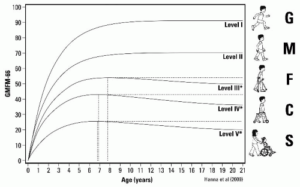
Snow is falling and wind blowing hard here in Denmark. Before I met ABR, winter was a time of continuous sore throats, bronchitis’s, ear infections and pneumonias. ABR work changed this situation dramatically for my son Gawain, but also keeps our whole family much more healthy because we can react quickly to the oncoming colds and flues.
Many of our ABR families do not realize that some of the basic exercises can be applied for acute winter illnesses like bronchitis, sore throats, ear infections and pneumonia. In fact, one could even say that for a CP child, these ABR applications are really the best “first aid actions” should any of the above sicknesses occur. For an otherwise healthy child or adult, one can often cure sore throats and bronchitis within several minutes with these ABR techniques.
The passive ABR applications – (excluding of course the PAVES and active exercises done upright involving active participation from the child) cannot be compared to gym exercises or training. When a child is ill, it is the normal reaction of the parents to “give the child a break” from ABR exercises. But this instinctive reaction – which would be correct in respect to any other kind of training – does not actually serve the basic needs of the child and overlooks the fact that in the case of illness, the special needs child is even more vulnerable when faced with common colds, than the otherwise healthy individual is. They often require, and can profit immensely from extra “biomechanical care” in order to overcome even a simple bronchitis or cold and to prohibit it developing into a serious bronchitis or pneumonia.
ABR exercises do not cause any energy expenditure for the child, but on the opposite, through the path of mechano -transduction, serve as an additional source of energy that the child could not otherwise gain access to.
Biomechanical compresses and plasters
Traditionally colds, flues and earaches have been successfully treated with household remedies. The usage and knowledge of these remedies has been widely forgotten, but their effectiveness remains for those who know how to apply them.
Substances like onions, boiled potatoes, quark, cabbage, lemon and black mustard seeds have been used traditionally with good success for hundreds of years. Antibiotics – even though they have dubious long term effects, forced household remedies almost into oblivion.
These compresses are easy enough to apply, but involve some knowledge of how to do it and are often a bit time consuming.
On the other hand, for the parent equipped with ABR towels, foam constructions and soft balls, one can go to work immediately without involving any messy kitchen substances, and help the child to recover quickly. For the special needs child, the ABR methods serve even better help than the age-old house hold compresses and remedies.
Sore throats: It is not often easy to detect a sore throat in a non-verbal child. Even a healthy and speaking child will not always tell the parents that the throat is hurting. Sometimes one can hear that the voice sounds hoarse, but not always. Early detection of a sore throat is important because a sore throat can often develop into a bronchitis or pneumonia, and it is much easier to get rid of if one can stop it early and at the throat level.
The basic 3-Q U-Shaped exercise is a great application for sore throats. In fact, one should always have the U-Shaped construction prepared and ready to use in the winter months. If the child cries with a sore throat, or if one looks into the back of the throat with a small flash light or torch and sees that the throat is bright red at the back, then one should do some frequent bursts of the U-Shaped exercise to stop the cold at this level before it becomes a lower respiratory problem.
If one gets a sore throat oneself then it is possible to take the U-Shape construction and apply the exercise for ten or twenty minutes until the soreness disappears. Long movements mixed with rhythmical oscillating movements serve best.
Bronchitis – it is important to detect and to treat a bronchitis infection in a cp child as fast as possible due to the danger of the bronchitis developing into pneumonia. Many families chose to take immediate flight to the hospital when a bronchitis appears, let the child receive high doses of antibiotics, which, when given repeatedly, serve to further weaken the child’s immune system. Not all families have access to a good homeopathic doctor, naturopath or an anthroposophical doctor who can advise and support the parents in the treatment of these illnesses without antibiotics usage.
ABR Bronchitis first aid help consists of:
Frequent Chest applications of both 3 – Q and Ball Rolling.
3-Q – using a large melon construction. One can work on the upper and lower thorax for several short periods during the day. Utilize the long movements as well as periods of rhythmical oscillating movements.
Super Soft Ball Rolling – should be done on the anterior and posterior thorax
In addition, especially if the child cannot cough or is not coughing successfully, one should add clapping techniques. Clapping has been done for centuries, and one can add to the effectiveness of simple clapping on the chest, but putting some foam and towel layers between the clapping hand and your child’s chest. The wrist is relaxed and the hand is allowed to fall with its entire weight on the chest. Clapping should also be done frequently, all around the thorax, front, sides and back. It also helps to release mucus that is lodged in the bronchial system.
Parents who have learned PAVES exercises can also combine the above with short intervals of placing the child on a gymnastic ball or peanut ball together with a soft memory foam pillow. The oscillating applications can be done with the child in various positions resting on his thorax over the pillow and ball.
Between the parent’s hands and the child, one can place a few layers of foam batting and back up foam.
Oscillations:
1. Pre-compression – a deep volume touch
2. Pause
3. Small , short, oscillating bounces starting downwards
4. Fifty to one hundred oscillations in each position
If the child should get pneumonia in spite of one’s efforts, then the above applications are also suitable.
Ear Infections:
3-Q – Use a medium sized melon that sufficiently covers the ear area.
Super Soft Ball Rolling – use a foam ball filled pocket and a small ball like the kiga overball to roll the area especially downwards and forwards towards the face.
Diane Vincentz





 With ABR techniques we create movements within the child or adult that are within a very small range – the range of about one centimetre. This range is much higher than the microscopic level, and on the other hand – if one thinks about long chain movements like taking a step or throwing a ball – these ABR movements at first seem minimal.
With ABR techniques we create movements within the child or adult that are within a very small range – the range of about one centimetre. This range is much higher than the microscopic level, and on the other hand – if one thinks about long chain movements like taking a step or throwing a ball – these ABR movements at first seem minimal.

 Human movement is dependant upon precise limb/trunk coordination.
Human movement is dependant upon precise limb/trunk coordination.



